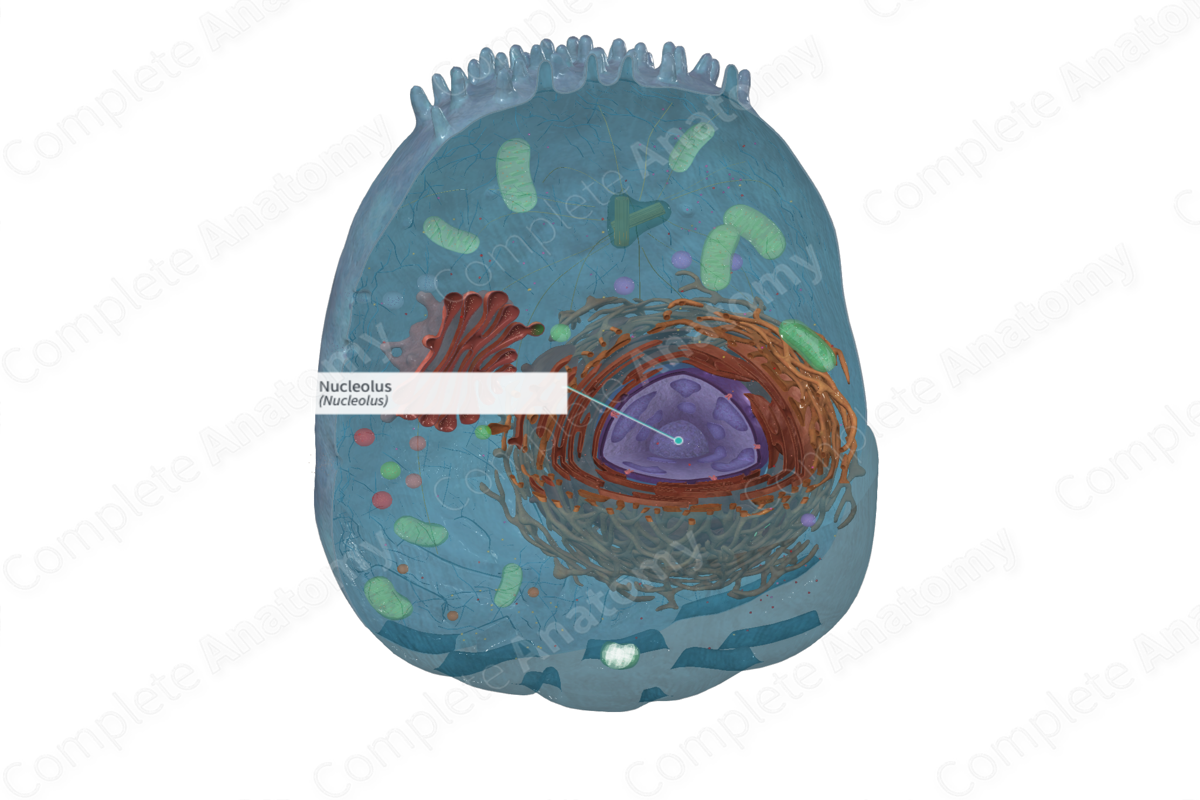
Quick Facts
The nucleolus is a rounded, dense body, present in the nucleus of eukaryotic cells during interphase, that is the site of ribosomal RNA (rRNA) synthesis and ribosomal subunit assembly. It consists of (a) a fibrillar center, containing the rRNA genes, surrounded by (b) the pars fibrosa, a dense fibrillar component where transcription occurs, and (c) the pars granulosa, a granular component where the ribosomal subunits are assembled. Multiple nucleoli occur in some cells (Dorland, 2011).
Related parts of the anatomy
Structure and/or Key Feature(s)
The most predominant, non-membranous structure in the nucleus is the spherical nucleolus. It surrounds rRNA genes that are transcriptionally active. The nucleolus is the site of synthesis of the ribosomal ribonucleic acid (rRNA), ribosomal production, and assembly. The size of the nucleolus is 1–2 μm but its size varies within different populations of cells. In cells that are most active in synthesizing proteins, the nucleolus is well developed and prominent. It is common for some cells to contain more than one nucleolus.
Morphologically, the nucleolus is divided into three distinct regions which are the fibrillar centers, fibrillar material, and granular material.
The fibrillar centers contain DNA loops of chromosomes 13, 14, 15, 21 and 22 which contain rRNA genes, RNA polymerase I, and transcription factors.
The fibrillar material (also known as “pars fibrosa”) contains large amounts of rRNA and ribosomal genes that actively undergo transcription.
The granular material (also known as “pars granulosa”) contains pre-ribosomal particles that are densely packed and is the site where ribosomes start to assemble.
Like heterochromatin, the nucleolus stains with basic dyes and hematoxylin (Ross and Pawlina, 2006).
Anatomical Relations
The nucleolus is located near the center of the nucleus.
Function
The nucleolus synthesizes and assembles ribosomal RNA (rRNA) (Ross and Pawlina, 2006).
List of Clinical Correlates
Nucleoli house proteins for ribosome synthesis and oncogenes and tumor suppressor genes that control cell proliferation. Structural and functional faults in nucleoli have been the basis of a number of disease processes including some types of cancers (McKinley, O'Loughlin and Pennefather-O'Brien, 2016).
References
Dorland, W. (2011) Dorland's Illustrated Medical Dictionary. 32nd edn. Philadelphia, USA: Elsevier Saunders.
McKinley, M. P., O'Loughlin, V. D. and Pennefather-O'Brien, E. E. (2016) Human Anatomy. 5th edn.: McGraw-Hill Education.
Ross, M. H. and Pawlina, W. (2006) Histology: A text and atlas. Lippincott Williams & Wilkins.
